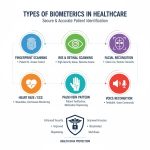Assisted Reproductive Technology Market: Transforming the Future of Family Building
The Assisted Reproductive Technology (ART) market represents a rapidly evolving sector within the global healthcare industry, encompassing various medical procedures and technologies designed to help individuals and couples achieve pregnancy when natural conception proves challenging. This market includes In Vitro Fertilization (IVF), Intracytoplasmic Sperm Injection (ICSI), embryo transfer procedures, fertility preservation techniques, and advanced genetic screening methods. The market has experienced substantial growth driven by several key factors including rising infertility rates worldwide, delayed childbearing due to career priorities and lifestyle changes, increasing awareness about fertility treatments, and significant technological advancements in reproductive medicine. Additionally, growing acceptance of ART procedures, improved success rates, and expanding insurance coverage in many regions have contributed to market expansion. The sector continues to benefit from ongoing research and development initiatives, government support programs, and the emergence of innovative treatment protocols that enhance patient outcomes and accessibility.
Get a Sample Copy:- https://www.vantagemarketresearch.com/assisted-reproductive-technology-market-2403/request-sample
Market Dynamics
The Assisted Reproductive Technology market operates within a complex ecosystem influenced by multiple interconnected factors that shape its growth trajectory and future prospects. Demographic shifts play a crucial role, with increasing numbers of women postponing pregnancy until their thirties and forties, leading to age-related fertility decline and higher demand for ART services. Economic factors significantly impact market dynamics, as the cost of treatments remains a barrier for many patients, though expanding insurance coverage and financing options are gradually improving accessibility. Technological innovations continue to drive market evolution, with developments in artificial intelligence for embryo selection, time-lapse imaging systems, and advanced cryopreservation techniques enhancing success rates and patient experiences. Regulatory frameworks vary significantly across regions, influencing market development patterns and treatment availability. The COVID-19 pandemic initially disrupted the market through procedure delays and clinic closures, but also accelerated the adoption of telemedicine and digital health solutions in fertility care. Social factors including changing attitudes toward family planning, increased awareness of fertility preservation options, and growing acceptance of third-party reproduction contribute to market expansion. Healthcare infrastructure development, particularly in emerging markets, creates new opportunities for service provision and market growth.
Top Trends
The Assisted Reproductive Technology market is experiencing transformative trends that are reshaping the landscape of fertility treatment and reproductive medicine. Personalization of treatment protocols has emerged as a dominant trend, with clinics increasingly utilizing genetic testing, hormonal profiling, and individual patient characteristics to customize treatment approaches and optimize success rates. The integration of artificial intelligence and machine learning technologies is revolutionizing embryo selection processes, with AI-powered systems analyzing embryo development patterns to predict implantation potential more accurately than traditional methods. Fertility preservation has gained significant momentum, particularly among cancer patients and women seeking to delay childbearing for personal or professional reasons, leading to expanded egg and sperm freezing services. The rise of fertility-focused digital health platforms and mobile applications is transforming patient engagement, offering fertility tracking, treatment monitoring, and virtual consultations that enhance accessibility and convenience. Minimally invasive procedures and mild stimulation protocols are becoming increasingly popular, reducing patient discomfort and treatment-related risks while maintaining effectiveness. The emergence of innovative financing models, including fertility benefit programs offered by employers and specialized lending platforms, is making treatments more accessible to diverse patient populations. Additionally, the growing focus on mental health support and counseling services within fertility clinics reflects a more holistic approach to patient care.
Top Report Findings
- The global ART market is projected to experience double-digit growth rates over the next decade, driven by technological advancements and increasing patient demand.
- In Vitro Fertilization (IVF) procedures account for the largest market share, representing approximately 85% of all ART cycles performed worldwide.
- Success rates for ART procedures have improved significantly, with live birth rates per embryo transfer increasing by over 15% in the past five years.
- The average age of women undergoing ART treatments has risen consistently, with patients over 35 representing more than 60% of treatment cycles.
- Fertility preservation services have experienced explosive growth, with egg freezing procedures increasing by over 200% in major markets.
- Single embryo transfer has become the standard practice in developed countries, reducing multiple pregnancy rates while maintaining overall success rates.
- The cost of ART treatments varies dramatically by region, with significant disparities in accessibility and insurance coverage.
- Genetic testing integration in ART procedures has increased substantially, with preimplantation genetic testing being utilized in over 40% of IVF cycles.
- Male factor infertility accounts for approximately 40% of infertility cases, driving demand for specialized treatments like ICSI.
- The COVID-19 pandemic led to a temporary 25% decline in ART procedures in 2020, followed by a strong recovery and increased demand in subsequent years.
Challenges
The Assisted Reproductive Technology market faces several significant challenges that impact its growth potential and patient accessibility. Financial barriers remain the most prominent challenge, as ART treatments are expensive and often not fully covered by insurance plans, creating disparities in access based on socioeconomic status. The high cost of procedures, ranging from thousands to tens of thousands of dollars per cycle, excludes many patients who could benefit from these technologies. Regulatory complexities present another major challenge, with varying legal frameworks across different countries and regions creating confusion for patients and limiting treatment options. Some regions have restrictive laws regarding embryo research, donor conception, or surrogacy arrangements, forcing patients to seek treatment abroad. The emotional and psychological toll of infertility and repeated treatment failures creates significant stress for patients, requiring comprehensive support systems that many clinics lack. Technical challenges persist in achieving consistent success rates, particularly for older patients or those with complex fertility issues. The shortage of specialized fertility professionals, including reproductive endocrinologists and embryologists, limits clinic capacity and patient access in many regions. Additionally, ethical considerations surrounding embryo research, genetic testing, and reproductive autonomy continue to generate debate and influence policy decisions that affect market development.
Opportunities
The Assisted Reproductive Technology market presents numerous opportunities for growth and innovation that could transform reproductive healthcare delivery. Emerging markets in Asia, Latin America, and Africa offer substantial expansion potential due to large populations, rising disposable incomes, and increasing awareness of fertility treatments. The development of more affordable treatment options, including simplified protocols and cost-effective technologies, could significantly expand the patient base and improve accessibility. Technological advancement opportunities include the integration of artificial intelligence for treatment optimization, development of non-invasive genetic testing methods, and creation of innovative fertility preservation techniques. The growing medical tourism sector presents opportunities for countries to attract international patients seeking high-quality, cost-effective ART services. Corporate fertility benefits represent a rapidly expanding market opportunity, as employers increasingly recognize the value of supporting employee reproductive health. The aging population in developed countries creates ongoing demand for fertility treatments, while younger generations show greater openness to fertility preservation and family planning services. Digital health integration offers opportunities to improve patient experience through telemedicine, remote monitoring, and personalized treatment support. Research and development in areas such as mitochondrial replacement therapy, artificial gametes, and uterine transplantation could open entirely new treatment categories and market segments.
Key Questions Answered in the ART Market Report
- What are the primary factors driving growth in the global Assisted Reproductive Technology market?
- How do success rates vary across different ART procedures and patient demographics?
- Which regions are experiencing the fastest growth in ART service adoption?
- What impact has technological advancement had on treatment outcomes and patient experience?
- How do regulatory frameworks differ across major markets and affect treatment availability?
- What are the emerging trends in fertility preservation and their market implications?
- How has the COVID-19 pandemic influenced ART market dynamics and patient behavior?
- What role does insurance coverage play in determining market accessibility and growth?
- Which demographic segments represent the largest growth opportunities for ART providers?
- How are digital health technologies transforming fertility treatment delivery and monitoring?
- What competitive strategies are leading ART providers employing to differentiate their services?
- How do cost considerations influence patient treatment decisions and market development?
Regional Analysis
The global Assisted Reproductive Technology market exhibits distinct regional characteristics shaped by demographic trends, regulatory environments, healthcare infrastructure, and cultural attitudes toward fertility treatment. North America represents the largest and most mature ART market, with the United States leading in terms of both treatment volume and technological innovation. The region benefits from well-established healthcare infrastructure, extensive insurance coverage in many areas, and high patient awareness levels. American fertility clinics are at the forefront of adopting new technologies and treatment protocols, contributing to consistently improving success rates. Canada offers universal healthcare coverage for some fertility treatments, though access varies by province. The North American market is characterized by strong competition among providers, driving innovation and service quality improvements.
Asia Pacific emerges as the fastest-growing regional market, driven by large populations, rising affluence, and increasing infertility rates in countries like China, India, and Japan. Japan faces unique demographic challenges with an aging population and declining birth rates, creating substantial demand for fertility services. China’s previous one-child policy and subsequent policy changes have influenced fertility treatment patterns, while India has become a major destination for medical tourism in reproductive medicine. The region shows significant potential for market expansion as healthcare infrastructure develops and awareness increases.
Europe maintains a well-established ART market with significant variation in regulatory approaches and coverage policies across member countries. Countries like Denmark and Belgium offer comprehensive public funding for fertility treatments, while others rely more heavily on private payment. The European market is characterized by high quality standards, extensive regulation, and growing cross-border treatment seeking as patients pursue more favorable legal environments or lower costs in different countries.
The Assisted Reproductive Technology market continues to evolve rapidly, driven by technological innovation, changing demographics, and evolving social attitudes toward family building. While challenges related to cost, accessibility, and regulation persist, the market presents significant opportunities for growth and improvement in patient outcomes. Success in this dynamic market requires understanding regional differences, embracing technological advancement, and maintaining focus on patient-centered care delivery. As the market matures, providers who can balance innovation with accessibility while maintaining high quality standards will be best positioned for long-term success.
![[Market Research Reports] – Research Google News Blog | VMR.Biz](https://www.vmr.biz/wp-content/uploads/2022/12/logo-removebg-preview.png)











